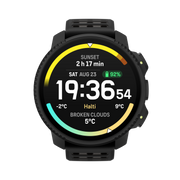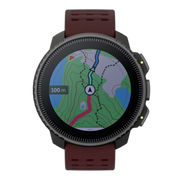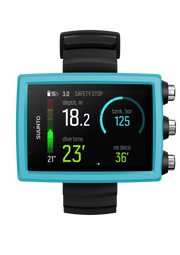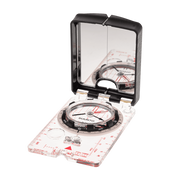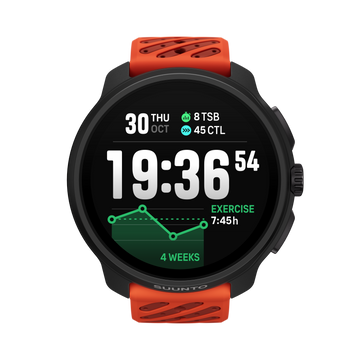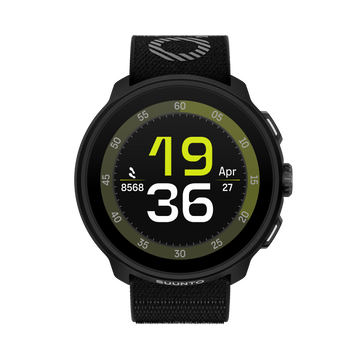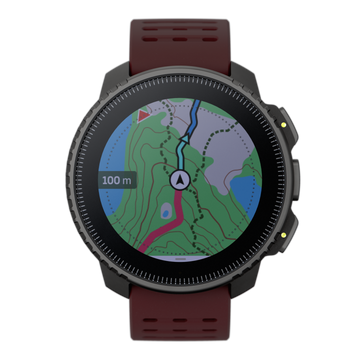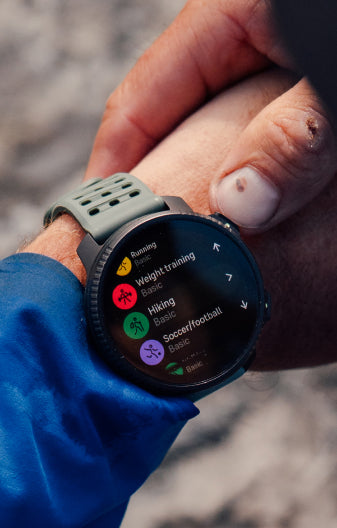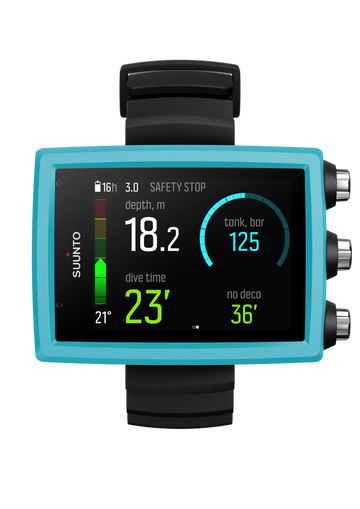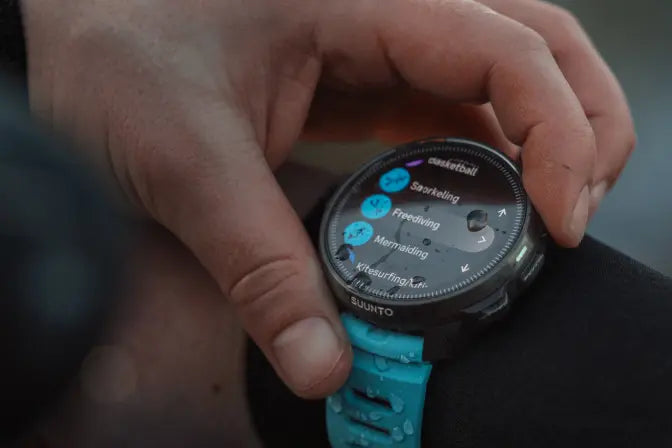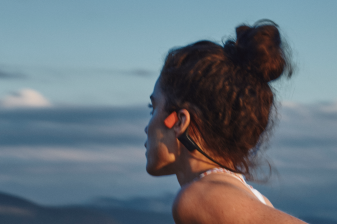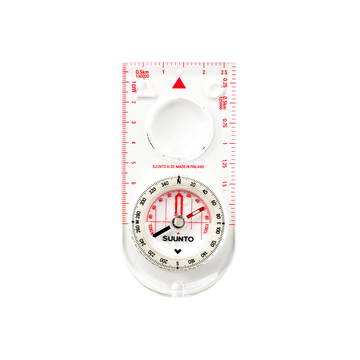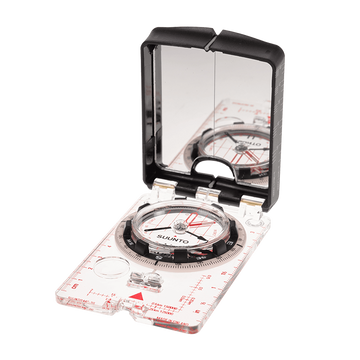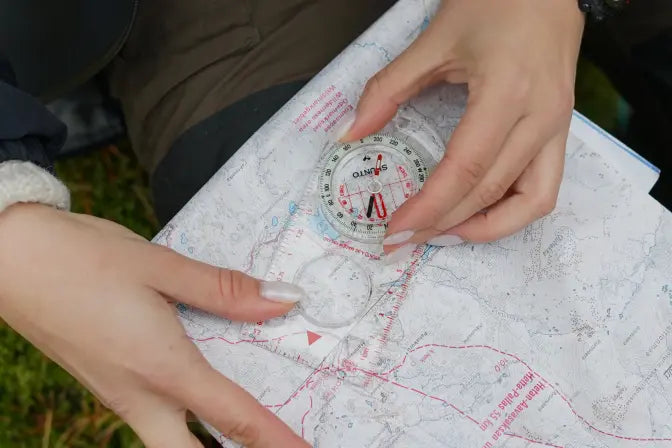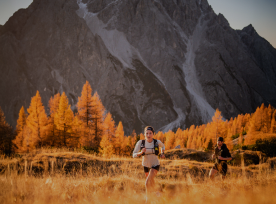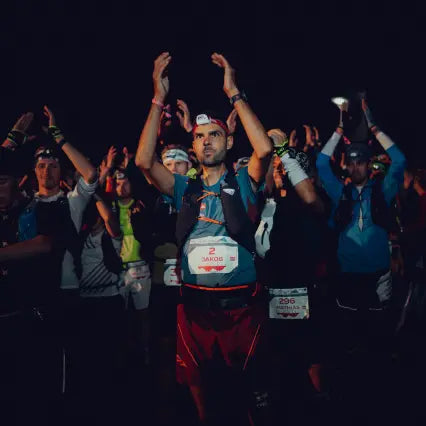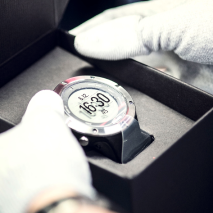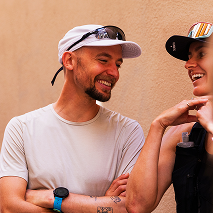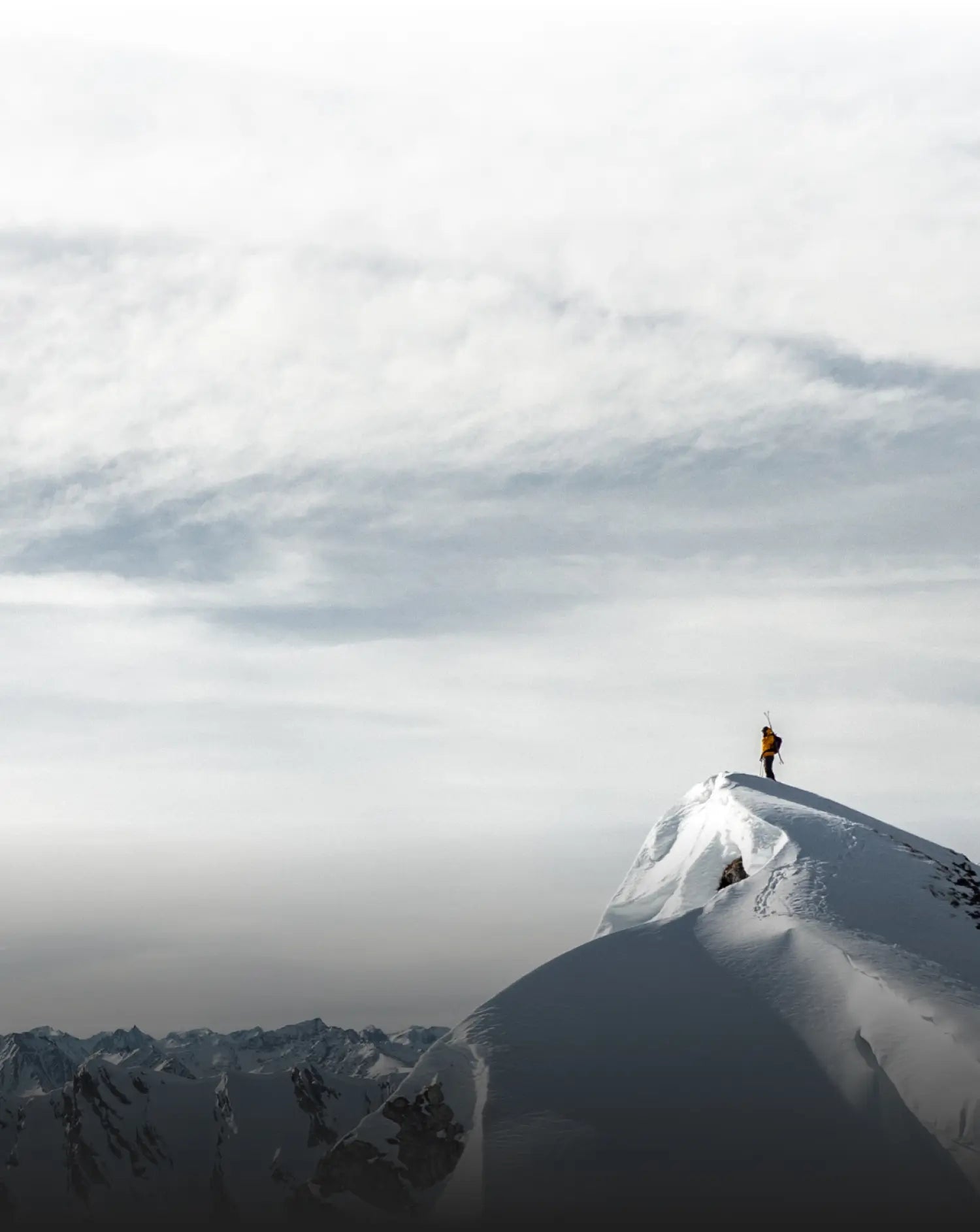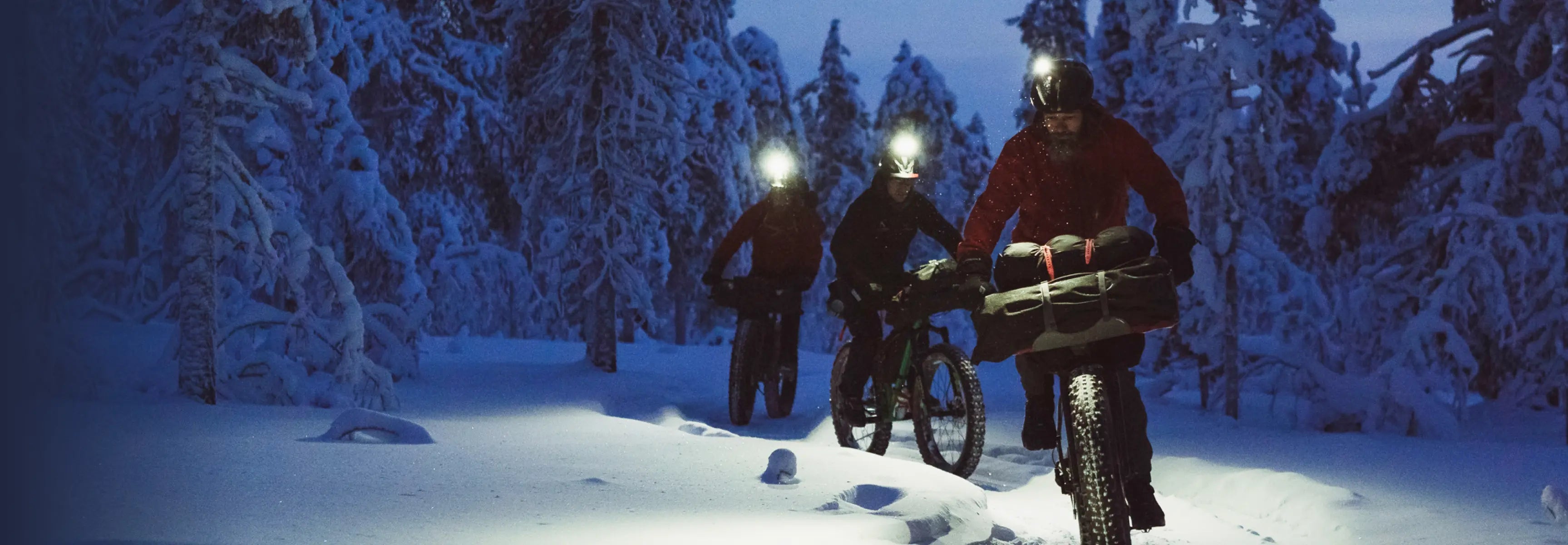
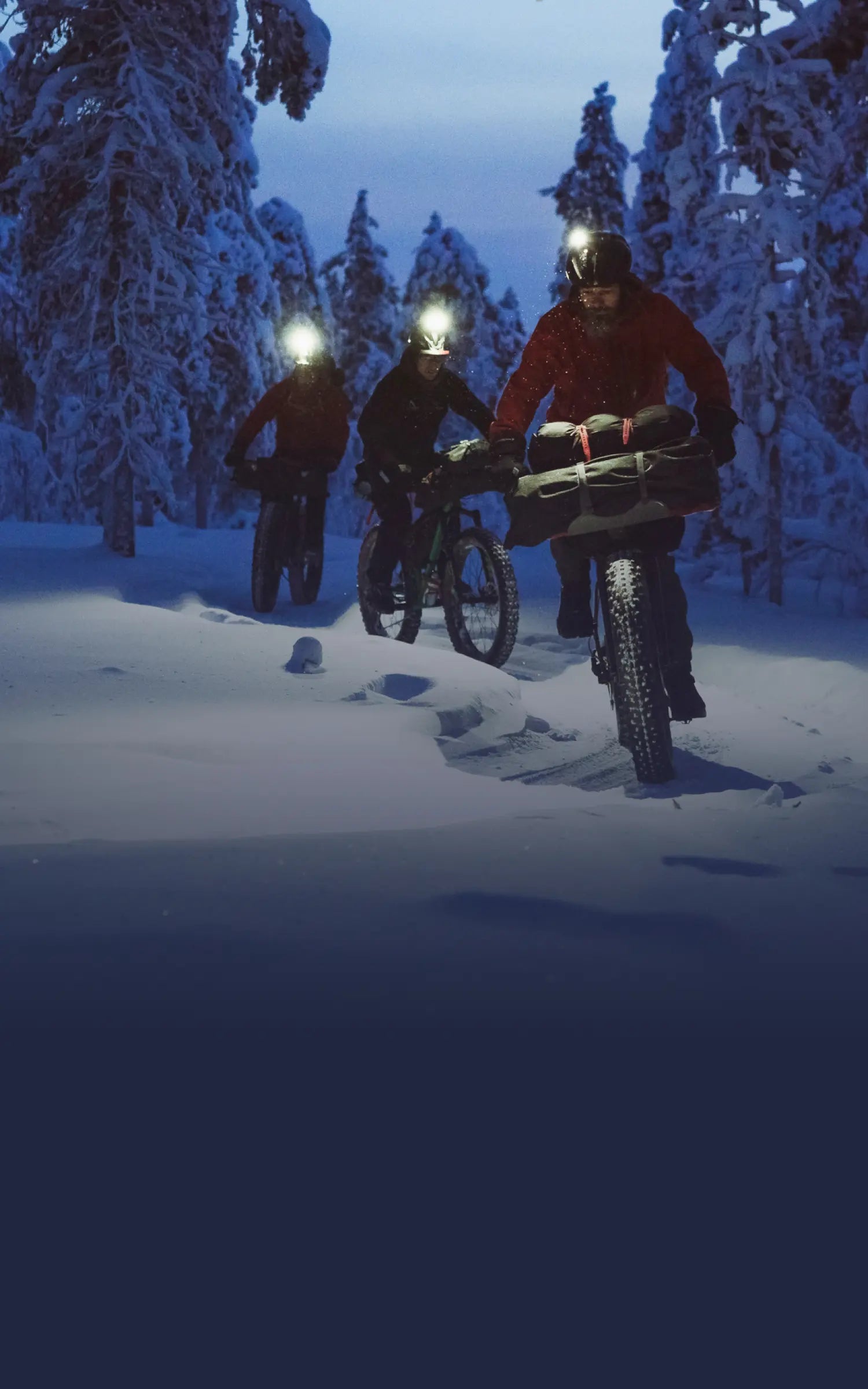
Suunto Blog
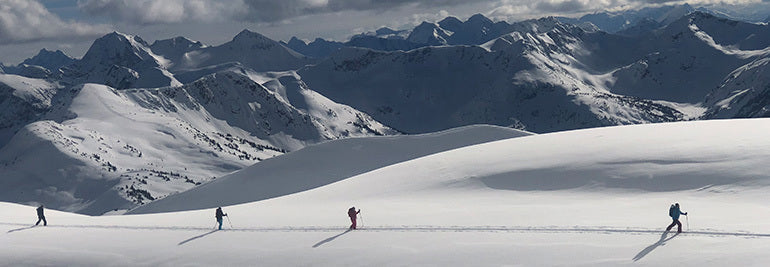
10 ways to make your adventures more sustainable
Greg charges his electric car on route to the mountains. © Greg Hill
With the release of his latest film, Electric Greg, skimo legend and Suunto ambassador Greg Hill showed how the adventure lifestyle can be more sustainable. He climbed more than 100 mountains without using any fossil fuel, instead relying on his small electric car to get him into the mountains.
Also a weekday vegetarian who grows his own vegetables, Greg has researched how he can “be a little better'' in terms being kinder to the planet. He says it’s not about being perfect, but just trying to improve incrementally.
“As outdoor enthusiasts we are the ones who appreciate and get so much back from nature, so we should be the ones doing the most to preserve it,” Greg says. “Snowboarder Jeremy Jones is the ideal example of that. He recognized his impacts and looked for ways to change it. In creating Protect our Winters, he enabled change on so many levels, from personal to political. We can all make a difference.”
Follow the cardinal rule
Before even thinking about other ways to be more sustainable, make sure you are following the cardinal rule of outdoor recreation: pack it in, pack it out. “It’s a pretty simple mantra,” Greg says. The only thing you should leave in the outdoors are your footprints, and the only thing you should take are photos.
For a month, Greg restricted himself to cycling to and from all his trips © Greg Hill
Find backyard adventures
Often times, destinations further afield seem more exotic. While it’s great fun to explore far away places, exploring our local recreation areas helps us to feel more connected to the land where we live. It’s fun to get a topographical map of your local area, note points of interest, and visit them all. It’s also a fun adventure project to walk, hike, bike or run every single trail in your local mountain or forest park.
Move to the mountains
If working remotely is a possibility for you, consider moving somewhere closer to the mountains. “If you love adventure, find the ideal town and move there, and then backyard adventure forever,” Greg says. This will result in less travel time, therefore less carbon emissions. And every morning you will look out the window and see the mountains waiting for you!
Greg is a weekday vegetarian. Studies show eating less meat is good for the planet. © Angela Percival / Arcteryx
Use rail when possible
One of the great things about living in Europe is the rail network. Sure, you might need to factor in more time to get to and from the mountains, but using rail, rather than driving a fossil fuel powered car, definitely helps us to be a little better. And after a big day in the mountains you can sit back on the train and enjoy a well earned beer or coffee.
Buy quality gear
In this age of fast fashion and disposable culture, we are conditioned to shop for the best bargain. But the best bargain is often not the best deal. Some outdoor gear – like Suunto watches, for example – have been designed and built to last. It’s also possible to send our watches back for repair, extending their lifespan. Other gear, like these running shoes designed by Salomon, can be recycled and turned into ski boots.
Yes, good quality, durable, hardy gear usually comes with a higher price tag, but ultimately it will save you money in the long run because it will last longer and perform better. While cheap quality products wear out quickly and end up in landfill.
Maintain your gear
To help make your gear last, get professional advice about how to maintain it properly. When you get home from a big hike, for example, clean your footwear properly with the correct cleaner, and keep your leather boots waxed so the skin doesn’t dry out, potentially cracking. And wash your rain gear with washing detergent designed for the job.
Go electric
Buying an electric car is awesome, but if it isn’t possible for you then another option is to rent one when you do visit somewhere by plane. “On the last trip that I had to fly to, I landed and rented an electric car,” Greg says. “It was a Tesla Model X and it was amazing!” Remember, it’s not about being perfect, just a little better.
Reduce microfiber plastic pollution
One of the big challenges for the outdoor gear industry is reducing microfiber plastic pollution. All the plastic-based sport clothing people wear sheds trillions of microfiber plastics when they are washed, which ends up in the ocean. It’s estimated there are now more than one million trillion microfiber plastics in our oceans. That’s about 200 million microfibers for every person on the planet. Ouch.
You can help tackle this problem by choosing to use clothing made of natural materials, such as wool, or you can use a Guppyfriend Washing Bag to prevent microfibers going into the waterway when you wash your plastic-based outdoor clothing.
Choose ethical companies
“Buy from companies that have good ethical policy towards the environment and are pushing change at their corporate level,” Greg says. “Many companies are now working hard at being better.” Visit company websites and see what they are doing about sustainability. Suunto’s environmental policy is here.
Avoid packaging
Plastic packaging is a big problem for the planet’s ecosystems. It’s out of control. So, instead of buying flapjacks, for example, make your own. Take a reusable water bottle, reusable food containers, and do everything in your power to phase out packaging!
Lead images: © Angela Percival/ Arcteryx
Read more articles:
Fuelling the engine: talking nutrition with Greg Hill
Proving electric adventure is the future
How to find your way in the mountains
8 avalanche safety checks to tick off before the ski season
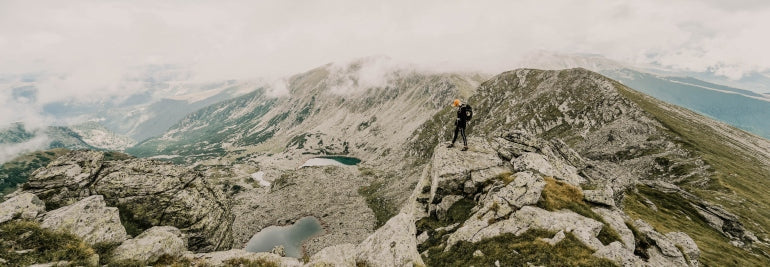
7 tips to plan a route in the mountains
The better prepared you are the more likely the trip is a success. © Arc'teryx / Piotr Drozdz
While deep in the mountains you are on your own. Take a wrong turn and you might be waiting awhile for the cavalry to arrive. That’s why respect is so important, and one shows that respect for mountain terrain by preparing well.
In the first article in this series on how to navigate in the mountains, we looked at map reading and location awareness. In this second post, our resident navigator-in-chief Terho Lahtinen takes us through the steps of planning a route.
Start somewhere familiar
For the purposes of practice, consider starting somewhere you are familiar with. That way you won’t be afraid of getting lost and will have more confidence to navigate by map and compass. “Another attribute of a good training terrain is it offers enough features to study on the map and in the terrain,” Terho says.
Choose your destination
This seems obvious, right? But it’s important to be clear about this and not have a vague idea. “Choose an area, a specific destination, some other target to visit,” Terho says. “Then consider how much time you have available and what kind of distance you can cover within that time.”
Be realistic
Don’t bite off more than you can chew. Consider the fitness and skill level of your group, and make sure you factor that into your planning. It’s always good to be a little on the cautious side.
Explain your trip plans to the group so you are all on the same page. © Dean Leslie / Red Bull Content Pool
Study the map
Ok, you’ve chosen a destination and considered your group, now it’s time to channel your inner nerd by studying the topographical map of where you intend to go. Notice we said “topographical map”; no tourist maps allowed – they don’t offer enough detail. Here’s what to look at on your trusty topo map:
Terrain features: First get an overview. In mountain areas, it’s essential to recognize the ridges, valleys, passes, rivers and other big formations.
Trail difficulty: If you intend to follow trails, find out what level of difficulty they are. Trails are often rated as easy, medium and difficult, and marked with different dashes on the map depending on the rating.
Trip options: What are the options on the map? For example, is there an easier versus more difficult route? Is there more than one way in and out? Is there a route that offers more shelter? Is there an easier plan B if plan A turns out to be too challenging for the group?
Distance: Measure the distances between points. You can do this by knowing the scale of your map. Every 1 cm on a map in 1:25 000 scale represents 250 m of terrain. Every 1 cm on a map in 1:50 000 scale represents 500 m of terrain. The average walking pace on flat terrain is 4 km/h, and can halve in difficult or steep country. What distance is possible for your group? Remember, the slowest in the group sets the pace!
Ascent/descent: As we mentioned in the previous article, look at the contour lines on the map. Where do they stack together, indicating steepness, and where are they spaced further apart, indicating more level terrain?
Calculate the total ascent and descent sums to estimate how hard or easy certain routes would be. It’s advisable to calculate 300m/h for ascents and 500m/h for descents. Consider the time available and the fitness of your group, and choose a route that ensures you avoid pushing people too far beyond their comfort zone.
Technical difficulty: Look for areas that might prove challenging, such as exposed trails above the treeline, snow cover in shadowed places, ground covered in rocks or tree roots, steep ascents or descents, river crossings, dense forest, or narrow trail. To help understand, research the area online. Try to find trip reports people have written about the area.
Shelter: In the event the weather turns nasty where on your route can you find shelter? This might be natural or manmade shelter.
Water: For overnight or multi day trips, look for water sources on your map.
Accommodation: If it’s on overnight or multi day trip, look for where you will sleep. If you’re camping, find where you are allowed to pitch your tent. If you want to sleep in a mountain hut make sure there are enough beds available and book early.
Be generous with time
On longer day trips or overnight trips, remember to factor in breaks in your planning. “Breaks are not only for resting, they are for enjoying and observing nature, for relaxing and immersion,” Terho says. “They are an essential part of the experience.”
So make sure you are generous in affording break time. Terho recommends to plan a five to 10 minute break each hour, or 10 to 20% of your moving time.
Allow for delays
Take into account the potential for unplanned delays along the way. A sudden lightning storm, torrential rain, a snow-covered trail, a dangerously swollen river, or a flooded trail – there are many things that could slow you down.
“The bigger the group, the more delays there will be as people adjust their gear, change clothing, or have pee breaks,” Terho says. “Factor this in.”
Practice makes perfect
Time for your homework! Using a local topo map, plan a route at home by following the above, and then go out and test the plan in the terrain. When planning, pay attention to the details and terrain features on the map that you should look out for on the trip in order to know you’re staying on the right course. Make a game of trying to identify as many of these features as you can when following the route.
Keep track of time, the degree of difficulty, delays you encountered, and once you are back at home compare how the trip unfolded in comparison to how you envisioned it based on your planning. What was different? What took more time than expected? What was easier?
Stay tuned for the next article in the series: Staying on course in the mountains!
Lead images:
Photo by Toa Heftiba on Unsplash
© Dean Leslie / Red Bull Content Pool
Read more articles:
How to find your way in the mountains
7 tips to find a safe track up the mountain
8 avalanche safety checks to tick off before the ski season
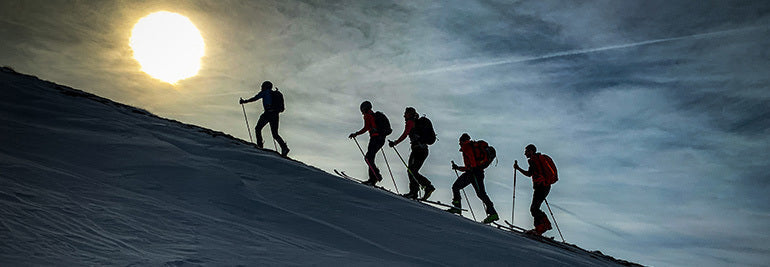
This challenge will take you higher!
© Phillipp Reiter
Believe it or not, there’s a hill or mountain somewhere that’s looking down at you laughing. It believes you’re a weakling. Do you have what it takes to shut it up?
That’s what Suunto’s annual World Vertical Week is about for the thousands of fans who participate each year. They find a nearby range, hill, or mountain that’s looking at them disrespectfully, and show that large mass of rock and earth who’s boss. As Sir Edmund Hillary famously suggested, there’s something satisfying about knocking the bastard off.
Seriously though, World Vertical Week is about the joy of a challenge, of sweating like a beast, and overcoming one’s resistance to fighting gravity to reach a summit. It’s an inexplicable human urge. All we know is we feel incredible after. To make it even more fun, we give you three incentives below to participate!
To participate in Suunto World Vertical Week 2020, open Suunto app and click the Vertical Week link in your inbox (the bell symbol on the top of your screen takes you to your inbox).
© Phillipp Reiter
New decade, new challenge
Starting on Sunday, February 23 and ending Sunday, March 1, this fifth edition of Suunto World Vertical Week also marks the first of a new decade. That’s why we want it to be the best ever.
For this reason we are sending out two special, optional challenges: climb 1000 m of vertical in one day during the week. Or, if that’s not possible, climb 1000 m over the whole week. That’s only a puny 150 m a day! Just imagine that arrogant hill sniggering if you fail!
Be in to win a Suunto watch
To give you extra incentive, we are running a photo contest on Instagram over the week, and will give away a Suunto 7 smartwatch or a Suunto 9 to three of the most inspiring photos that enter. All you need to do is share an image with a Suunto app data overlay and tag #verticalweek. We will decide the winners at the end of the week!
Click here to learn how to share your activities with Suunto app.
(Terms and conditions apply. Check them here.)
Rep your nation and sport
You can join the challenge on Suunto app, log all your efforts, and also compete for your nation and activity type. Last year, Italy came out on top for average ascents during the week. Spain also kicked ass; it came first in three divisions, and was also in the top five for four different activities. Will they continue to dominate?
To kickstart your competitive spirit, click here to see the results of last year’s Suunto World Vertical Week!
Lead images: © Phillipp Reiter
Read more articles!
Raising the stakes for Suunto World Vertical Week
7 tips to plan a route in the mountains
Which nation runs the fastest? 10 fun facts from 2019
10 ways to make your adventures more sustainable
How to find your way in the mountains.
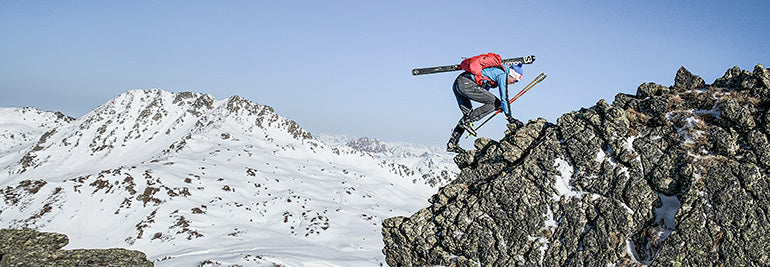
Raising the stakes for Suunto World Vertical Week
© Philipp Reiter
For us mere mortals, the Hoch Tirol ski route in the Austrian Alps usually takes six days of gut busting effort and every ounce of our endurance.
German ski mountaineer and trail runner Philipp Reiter and fellow runner and ski mountaineer Frenchman Francois D'haene aim to cover the 100 km and 10,000 m vertical gain in 24 hours starting this coming Monday. Both men enjoy a challenge.
“There’s a saying that it’s well known that something isn’t possible, and then someone comes along and just does it,” Philipp says. “You set a new limit and show that something once considered impossible is possible.”
To Philipp, this is what Suunto World Vertical Week is all about; taking on personal challenges. “For myself, when I have overcome a challenge like this, and I have other challenges not connected to sports, I understand if I just keep taking steps towards the goal I’ll eventually reach it.”
You can follow their adventure live and enjoy the beauty of the Austrian Alps; Philipp and Francois will be posting shots live from their adventure to our Instagram feed.
Click to find out about the Suunto World Vertical Week 2020 photo contest!
© Philipp Reiter
When Philipp isn’t out training in the hills, he works as a photographer for Salomon, capturing the action at big races in Europe. Over the last few years Francois noticed that he won all of the races when Philipp was at them working. “Eventually we decided to do something together, which is quite nice,” Philipp says.
Considered the queen of all ski routes, the Hoch Tirol route begins in Kasern in South Tyrol, and traverses Austria’s fourth highest mountain, Großvenediger (3657 m), and ultimately ends on the summit of the nation’s highest mountain, Großglockner (3798 m).
Philipp and Francois will start their journey around 9am on February 24, pushing hard to cover as much ground as possible before night falls and the going gets tougher. “The second stage will be the toughest,” Philipp says. “Navigation will be a challenge. It will be cold and we will be tired.”
Follow Philipp and Francois's adventure live here.
Lead images: © Philipp Reiter
Read more articles
This challenge will take you higher!
Must run routes around the globe!
Which nation runs the fastest? 10 fun facts from 2019.
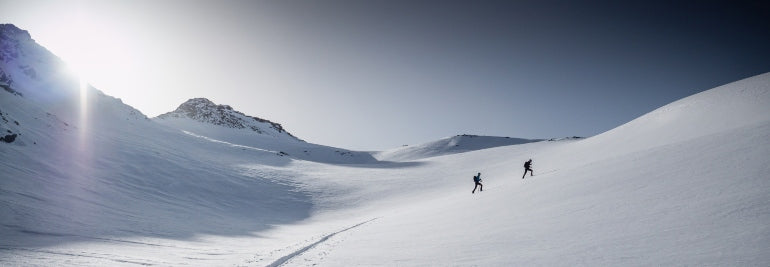
On the rise: top stories from World Vertical Week 2020
© Philipp Reiter
World Vertical Week has become an annual tradition, and many Suunto users are finding creative ways to get the most out of it.
The week is really an invitation to get outside, to push oneself, and find new resolve and strength. It’s also a chance to show that nearby hill or mountain who’s boss.
This year, we again ran a World Vertical Week photo competition with three lucky people winning a Suunto 7 or a Suunto 9. We asked our Instagram followers to share an image with a Suunto app data overlay from one of their ascents over the week and tag #verticalweek. We received so many inspiring entries. Thanks to everyone who participated. Check out the winners and their shots below. Congrats!
Firemen to the rescue!
Two firemen in Finland went above and beyond the call of duty for World Vertical Week. Henri-Aleksi Pietilainen, 29, and his room mate at the Rescue Academy showed their dedication by donning their protective fire gear and ascended the most popular training hill in Helsinki multiple times – and just after finishing a 24 hour shift. Respect guys!
“We thought it was going to be easier (considering my level of training in the mountains and my friend’s latest expedition through Greenland), but the extra 25 kg of weight and unforgettable clothing and gear gave a nice extra ‘touch’ and was really good training,” Henri says. “We did this in a pair because in real firefighting rescue missions it’s good to have a partner to help each other out.”
Cooking up a storm
It was Lukasz Bodaszewski’s first time participating in World Vertical Week. The 39-year old chef from Poland runs a catering company with his wife in the French Alps. He aimed to ascend 3000 m over the week, and managed 2300
“But I finished 1000 m in one day and I’m proud of that,” he says. “Vertical Week was good timing because I’m training for the 160 km Val d’Aran UTMB in the Pyrenees and for 145 km TDS at UTMB this year, so it was good to have a specific climbing week.”
Getting out there
Casey Sackett didn’t hold back for World Vertical Week. From Hurricane, Utah, Casey aimed to achieve a mile of vertical gain (1610 m) over the week. He notched up a total of 1631 over a series of awesome trips, including mountain biking the Gooseberry Mesa and the rest what he refers to as “desert alpinism” (alpine style lines in a desert ecosystem).
“Conditions were perfect all week out here and gave me the opportunity to get out every chance I had!” Casey says. “My favorite push was my last one, trekking/trail running up a mesa to the La Verkin Overlook. My eight-year-old daughter set the pace on the 4 km ascent with almost 243 m of gain. We did it in just 61 minutes! Her endurance blew me away, so proud!”
Thanks again to everyone who got out there and pushed their comfortzone for World Vertical Week. Keep it up!
Lead images: © Philipp Reiter
Read more articles
The nation that climbed the most in World Vertical Week is ...
7 tips to accelerating your vertical speed
How to find your way in the mountains
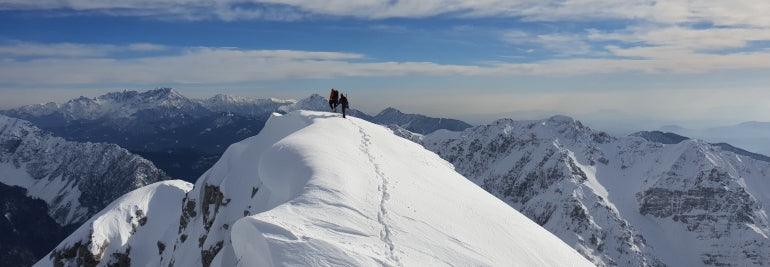
World Vertical Week 2020 Big Data: The nation that climbed the most is …
Well done to everyone who got out there and chased vertical meters over World Vertical Week 2020. We saw some inspiring efforts from people around the world.
Two firefighters, for example, donned their heavy protective clothing and gear, and powered up and down the best training hill in their hometown of Helsinki, Finland. That’s going above and beyond the call of duty! Read their and two other cool stories from the week here.
At Suunto HQ we are always excited to analyze the data and see how much our users have climbed over the week, and which nations and sports have sweated it out and gathered the most vertical meters. This year week has some exciting results.
Over time, World Vertical Week has gradually been becoming a tradition; more and more people are participating and sharing their love of moving uphill.
Return to the top
Last year, one of the surprise results was that Austria lost it’s top place as the nation that gains the most vertical meters by average after holding it for two years. This year, the alpine nation has retaken the throne. The average climb among Suunto users in Austria was 457 m. Sehr gut Österreich!
Notable mention to second place Switzerland (418 m) after dropping to eighth place last year. In the previous two years before that it was near the top. Italy (395 m) came third. These results prove once again that alpine nations know the best way to move is upwards!
The overall kick ass nations
Respect to our users in Italy, Spain, Austria, and France, all nations that came in the top five of five or more categories. Italy landed in the top five of 10 different categories, and Spain landed in the top five of seven.
Skimo the go
No surprises here; once again ski mountaineering accumulated the most vertical meters (838 m) on average out of all our activity types. Mountaineering (545 m) and trail running (466 m) came in second and third, as they did last year.
Race to the top
In the race for most total ascents per country, France beat out Spain to win the country that climbed the most. Last year, Spain came out on top. And, once again, Italy came in third.
Impressive individual efforts
There were 1772 participants who climbed more than a thousand meters during the week, and 1095 individual sessions that included more than 1000 meters of climbing. That’s some solid training, folks. Well done!
Top nations by sport
Ski touring
No nation cracked the 1000 m mark this year in the skimo stakes, but it’s clear many users are gunning for this. Keep pushing and nail it next time!
1. Spain 972m 2. Austria 948m 3. Italy 946m 4. Switzerland 921m 5. Slovakia 903m
Mountaineering
Kudos to Sweden, a small nation of 10 million, for coming out on top in the mountaineering category, and for breaking the 1000 m mark. Surprising given last year it didn’t even make the top five.
1. Sweden 1316m 2. Italy 1060m 3. Austria 666m 4. Spain 581m 5. Slovenia 494m
Trail running
People in Asia are crazy about trail running, and once again Asian nations won the podium this year and four were in the top five. Nice!
1. Japan 932m 2. Hong Kong 896m 3. Thailand 676m 4. Greece 649m 5. Malaysia 636m
Mountain biking
Austria won this one, followed by Spain and Italy; all nations in the top five last year, too.
1. Austria 582m 2. Spain 513m 3. Italy 469m4. Switzerland 375m 5. France 356m
Trekking
Notice anything? This time Italy wins and Spain and Austria follow.
1. Italy 559m 2. Spain 397m 3. Austria 375m 4. France 352m 5. Malaysia 316m
Hiking
Malaysia came out on top here, and, as a side note, also came in fifth place for both trekking and trail running. We can imagine exploring the incredible mountainous rainforests in Malaysia must be pretty motivating!
1. Malaysia 606m2. Italy 475m 3. New Zealand 453m4. Slovenia 352m5. Japan 343m
Nordic skiing
Go Canada! Last year Canada came second, behind France. This year they reversed positions.
1. Canada 438m2. France 268m3. Norway 233m4. Austria 218,0m5. Italy 217,6
Cycling
Portugal won after not even making the top five last year. Spain, Italy, Israel and South Africa once again filled the rest of the positions.
1. Portugal 460m 2. Spain 390m 3. Italy 345m 4. New Zealand 316m 5. South Africa 310m
Running
This category had very narrow margins between nations, and a slight reduction in average meters from last year. Last year New Zealand won it. Congrats Norway!
1. Norway 156m 2. Switzerland 151m 3. Czech Republic 142m 4. Italy 140m 5. France 139m
Lead images:
Photo by Klemen Tušar on Unsplash
Photo by Jamie Davies on Unsplash
Read more articles
On the rise: top stories from World Vertical Week 2020
How to find your way in the mountains
7 tips to accelerating your vertical speed



